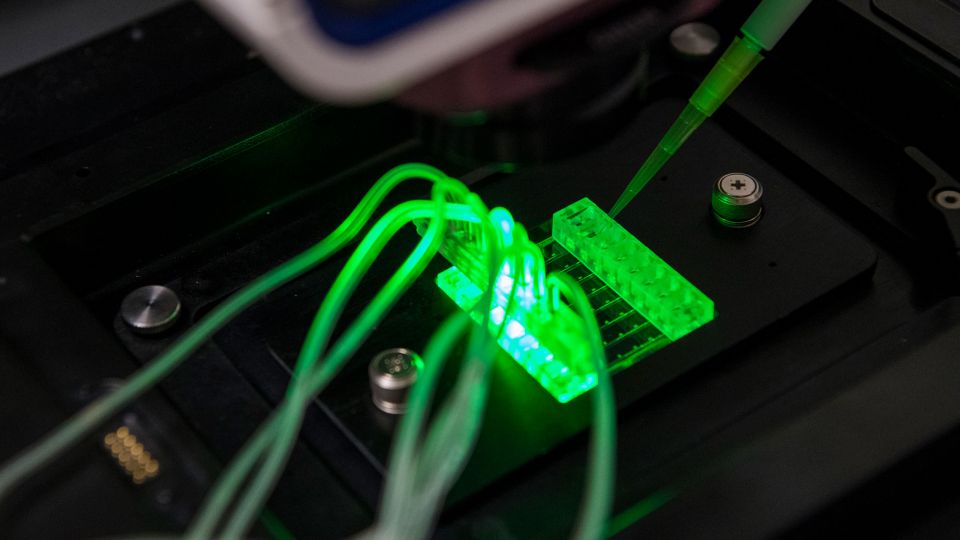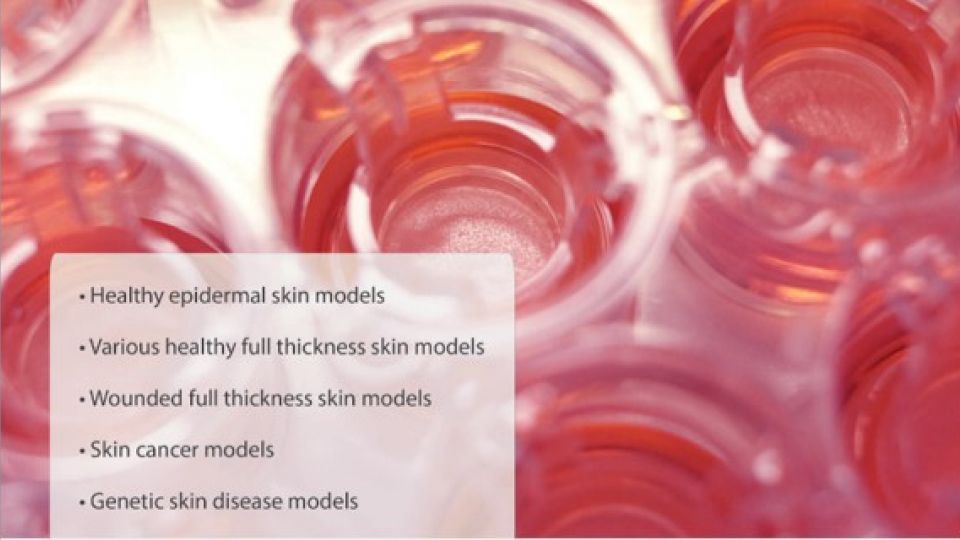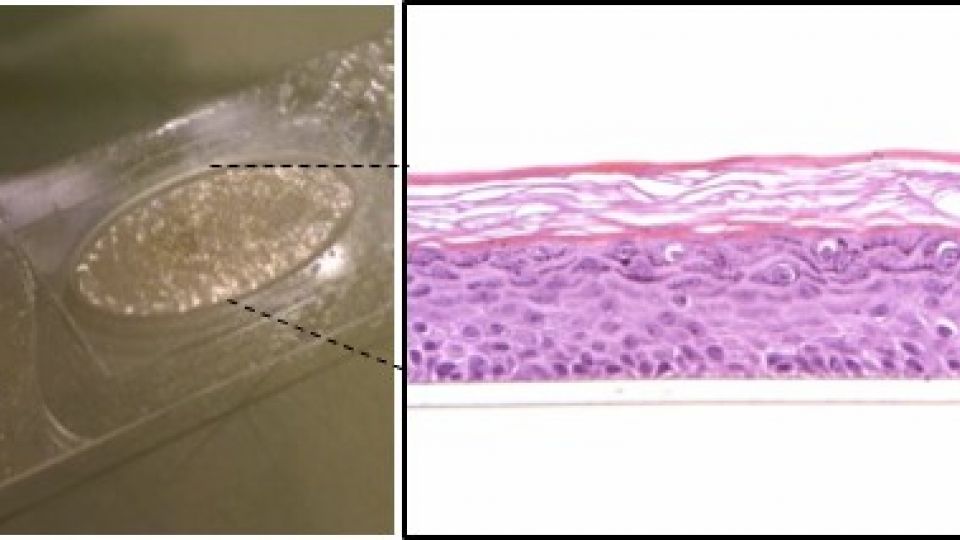Vessels-on-chip
By comparing cells of patients with a vascular abnormality with those of healthy individuals, we can learn a lot about the development of vessel abnormalities. Scientists study this using 'blood vessels-on-chip': 3D miniature models with which they can properly simulate diseases.
For example, at the LUMC scientists study the vascular diseases cerebral amyloid angiopathy (CAA) and hereditary hemorrhagic telangiectasia (HTT). With both disorders an abnormality causes blood vessels to become leaky. Using the blood vessels-on-a-chip they aim to learn more about the origin of these diseases and aim possibly to find a way to treat them.
Microfluidics chips
In addition to the 3D models, we also use microfluidics in the LUMC. Hereby we put blood vessel cells on 3D slides with very small channels. That way we can study the formation of blood vessels in the laboratory. Substances can also be passed through the channels that can disrupt or promote blood vessel formation. In this way, scientists investigate the effect of certain drugs. The advantage of using microfluidics is that fewer animals are required for testing medicines.
3D-skin and Skin-on-chip
Within the LUMC we work with different skin models that are cultured in the laboratory. These so called three-dimensional (3D) organotypic skin cultures are very welcomed by the cosmetic, chemical and pharmaceutical industry. Organotypic human skin equivalents (HSEs) are in vitro systems that are engineered from primary human cells isolated from normal or diseased human skin. We also work with Skin-on-chip systems, which in addition harbors a dynamic flow system that is needed to provide necessary mechanistic signals and continuous stream and/or drainage of nutrients. Both systems resemble the human skin to very high degree, and are used for toxicity testing, but also to study skin diseases, such as wound healing, skin cancers and atopic eczema. In this way they serve as excellent alternatives to animal experimentation, and contribute to the development of novel treatments.
What is the function of the skin and vascular system?
Blood vessels are essential for the functioning of all tissues and organs in your body. They ensure that all cells in your body receive oxygen and that waste is removed. Malfunctioning blood vessels are often associated with heart diseases and neurological disorders such as Alzheimer's.
An intact skin is also important. The skin protects us against external influences and is important for the production of vitamin D. The skin also regulates the moisture and heat balance via the sweat glands. The enormous amount of nerve endings in the skin provide a sense of heat, cold and pain. In the event of damage to the skin, such as burns, protection against pathogenic microorganisms is lost and dehydration can occur.









